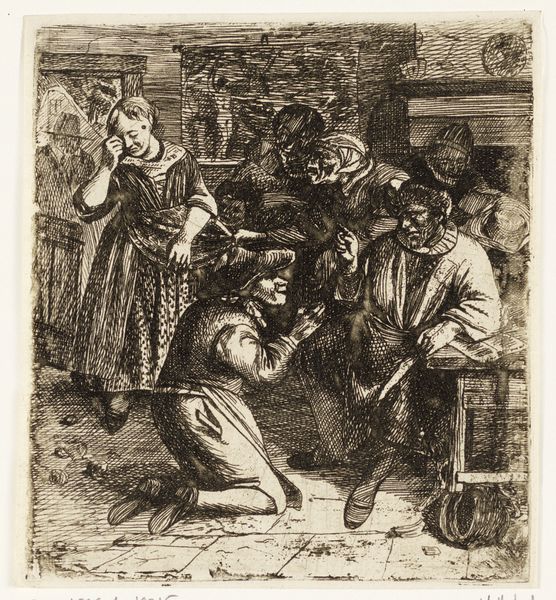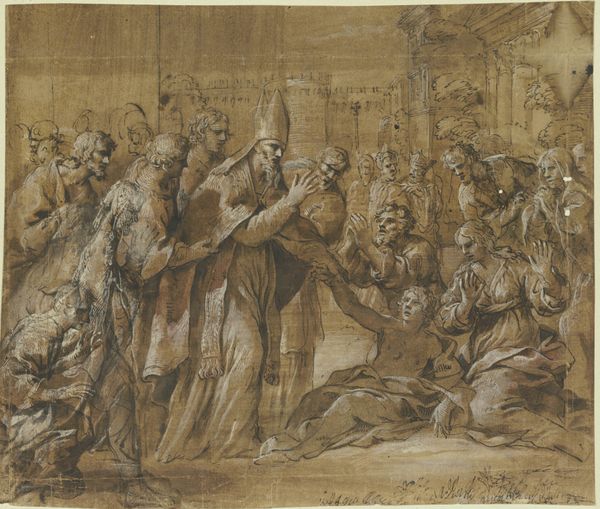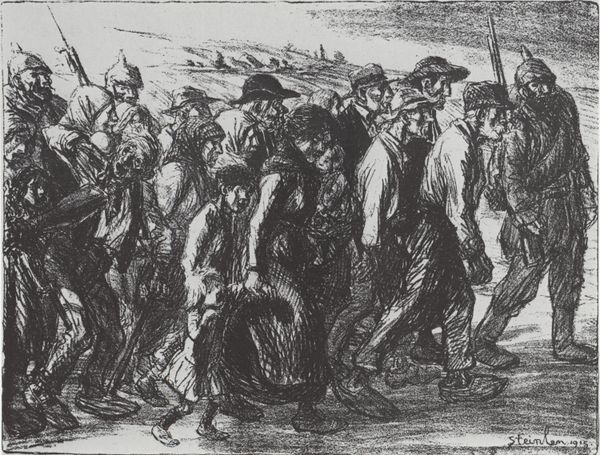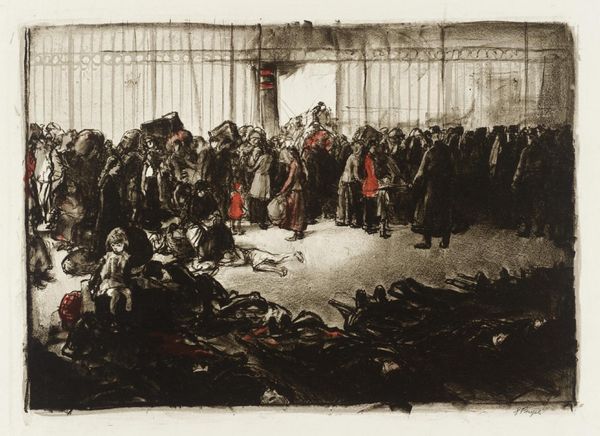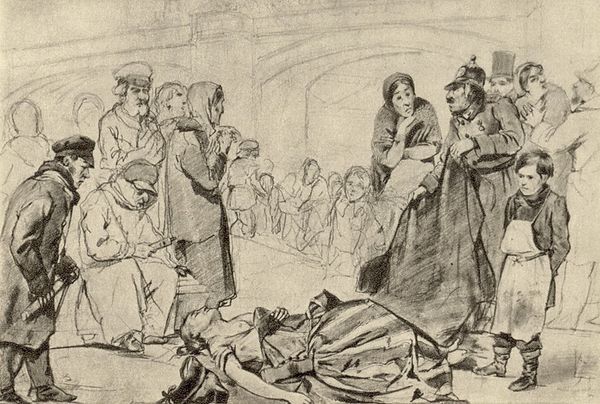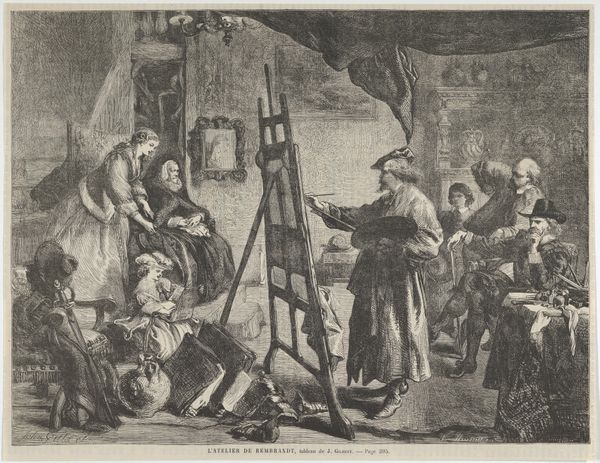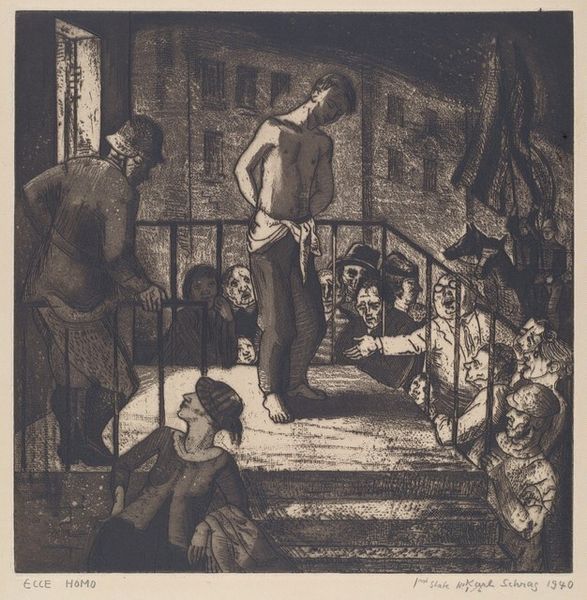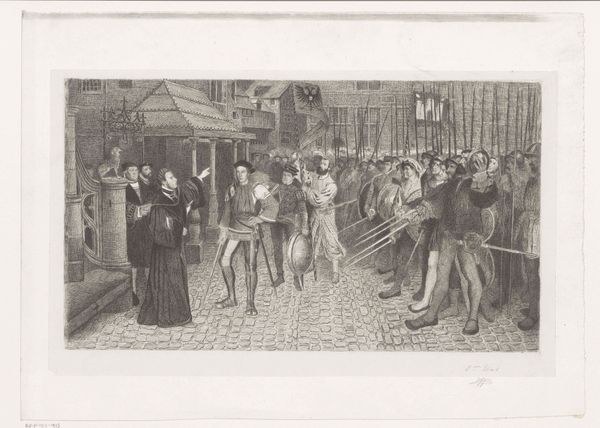
painting, print
#
narrative-art
#
painting
# print
#
social-realism
#
ashcan-school
#
cityscape
#
genre-painting
#
realism
Copyright: Public domain
Curator: George Bellows' print, "Cliff Dwellers" from 1913, is a quintessential example of Ashcan School's commitment to depicting everyday urban life. The scene overflows with human activity, illustrating the cramped living conditions of early 20th-century New York. Editor: It hits you right away with that density, doesn't it? The sheer mass of bodies packed into that lower section feels almost suffocating. I notice immediately that the materials, with the layered ink, add a roughness that mirrors the harshness of the depicted life. Curator: Absolutely. Bellows, as a member of the Ashcan School, was consciously challenging the idealized depictions of art prevalent at the time. He sought to represent the unvarnished reality of the working class, highlighting the challenges and struggles of immigrant communities in crowded urban settings. We have to acknowledge that his choices in depicting such subject matter was a socio-political position in and of itself. Editor: It makes you wonder about the physical act of creation, too. Think of Bellows applying those lines, almost scratching them into the plate—it feels urgent, reflective of the frenetic energy he was capturing. There’s also a question of consumption, and where the piece will be viewed. Would his audiences then be predominantly of the same social class, or would it cater to an upper-class that had very little knowledge of the represented people? Curator: He’s drawing attention to the material conditions of these peoples' lives, sure. But I can’t overlook the way this print engages with prevailing social attitudes. Works such as these opened discussions and helped promote awareness of the impact that urbanization, immigration and class stratification have on everyday life. Editor: Fair point. And the very act of printmaking makes it accessible, multipliable, meant for wider circulation. Looking at those repeated figures on the stoop further back there makes you understand Bellows was less interested in perfect portraits and more with how his process might emphasize scale. Curator: I see his dedication to portraying unglamorous life critically; without art made by artists like Bellows, art could be a mechanism of overlooking whole segments of society. Editor: Right, by forcing viewers to confront such scenes, Bellows challenged them to consider the labor and the social consequences inherent in urban growth. This challenges our notions of artistic skill too, shifting from what the painting captures to what the entire social and production line entails.
Comments
No comments
Be the first to comment and join the conversation on the ultimate creative platform.


